It looks like you're using an Ad Blocker.
Please white-list or disable AboveTopSecret.com in your ad-blocking tool.
Thank you.
Some features of ATS will be disabled while you continue to use an ad-blocker.
share:
There are quite a large number of Petroglphs discovered in South Western India which they say are evidence of a lost 12,000 year old civilization as
in The Konkan Petroglyphs, the claim is
somewhat problematic as there's no evidence of any civilization discovered in conjunction with the carvings and the dating is reliant on stone tools
found in a nearby cave which they've sort of dated to that period, but anyway the petroglyphs are splendid and one of the common motifs seen is
considered to represent Aquarius as the Water bearer.

If the dating and identification is correct then that would represent Aquarius at the time it was at the Autumn Equinox, were it has presently become were the Spring Equinox rises. It's also noteworthy that the motif is seen in conjunction with a pair of Tigers, if these are taken to represent Leo then that is opposite to Aquarius in the Zodiac and thus when Southern Aquarius rose at the Autumn Equinox then Northern Leo rose at the Spring Equinox.

Were this becomes enigmatic is that these same signs are also found in the Indus Valley culture though that is dated thousands of years later.

Aquarius and Leo seen together there would represent the time when Aquarius rose at the Winter solstice and Leo at the Summer solstice.

There are a series of signs seen in conjunction with this and also the Swastika was associated, that likely in terms of Ursa Major and Celestial North but with reversed polarity potentially also indicating the reverse rotation of the Southern hemispere.

My first consideration in seeing signs of Indus valley culture in Southern India was that the sites should have some connection as an extension of that culture, thus they would be later than generally considered, but there isn't any other evidence of Indus valley cultural motifs and civilization and it could also be argued those motifs simply continued into Indus valley culture.

It is the case that the shallow petroglyphs are best seen when they are filled with water and that aquatic creatures, mainly fish, are the majority of those seen at some sites, thus the whole cultural premise has something of an Aquarian basis which would also be found later in the cult of Enki who can also be correlated with Aquarius.

That also then connects to the coming of the Seven sages and the Fish people who taught humanity the little they knew with regards to Ab-zu.

Of course all these issues should be resolved during the Age of Aquarius i suppose.

If the dating and identification is correct then that would represent Aquarius at the time it was at the Autumn Equinox, were it has presently become were the Spring Equinox rises. It's also noteworthy that the motif is seen in conjunction with a pair of Tigers, if these are taken to represent Leo then that is opposite to Aquarius in the Zodiac and thus when Southern Aquarius rose at the Autumn Equinox then Northern Leo rose at the Spring Equinox.

Were this becomes enigmatic is that these same signs are also found in the Indus Valley culture though that is dated thousands of years later.

Aquarius and Leo seen together there would represent the time when Aquarius rose at the Winter solstice and Leo at the Summer solstice.

There are a series of signs seen in conjunction with this and also the Swastika was associated, that likely in terms of Ursa Major and Celestial North but with reversed polarity potentially also indicating the reverse rotation of the Southern hemispere.

My first consideration in seeing signs of Indus valley culture in Southern India was that the sites should have some connection as an extension of that culture, thus they would be later than generally considered, but there isn't any other evidence of Indus valley cultural motifs and civilization and it could also be argued those motifs simply continued into Indus valley culture.

It is the case that the shallow petroglyphs are best seen when they are filled with water and that aquatic creatures, mainly fish, are the majority of those seen at some sites, thus the whole cultural premise has something of an Aquarian basis which would also be found later in the cult of Enki who can also be correlated with Aquarius.

That also then connects to the coming of the Seven sages and the Fish people who taught humanity the little they knew with regards to Ab-zu.

Of course all these issues should be resolved during the Age of Aquarius i suppose.
As far as what can be said about the signs seen in conjunction with the symbols i suggest as Aquarius and Leo, and also the polarity reversed
Swastikas which i think represent Ursa Major/North and possibly South, then there is a connective morpheme, a numerical quantifier and an encapsulated
sign, in basic terms the logic of this could be two seemingly opposites united as a singular concept, it's also the case that the connective morpheme
sign used can be considered a derivative of the water-bearer symbol itself, which carries two loads balanced in opposition, thus the sign is sometimes
considered to relate to balance and judgement.

Indus Inscriptions.
Indus seals

Indus Inscriptions.
Indus seals
edit on 21-1-2022 by Madrusa because: (no reason given)
The elephant is also seen as the largest of the Petroglyphs and this also appears to have been an Indus valley constellation likely representing much
of the Northern Circumpolar region in the same manner as the Hippo did in Egyptian cosmology.

On Indus valley seals likely representing the Northern constellations can be seen on this example the elephant as greater Draco, the Swastika as a symbol of Ursa Major and Leo Minor and Leo Major and the figure in the tree Cancer.

As an alternative the bison can be seen as relating to Ursa Major which is the same as per Egypt and also the crocodile as relating to Lesser Draco on this example, so elephant, bison and Leo Major and Minor.

In Egypt the leg of the Bison could also be used as an alternate sign on it's own.
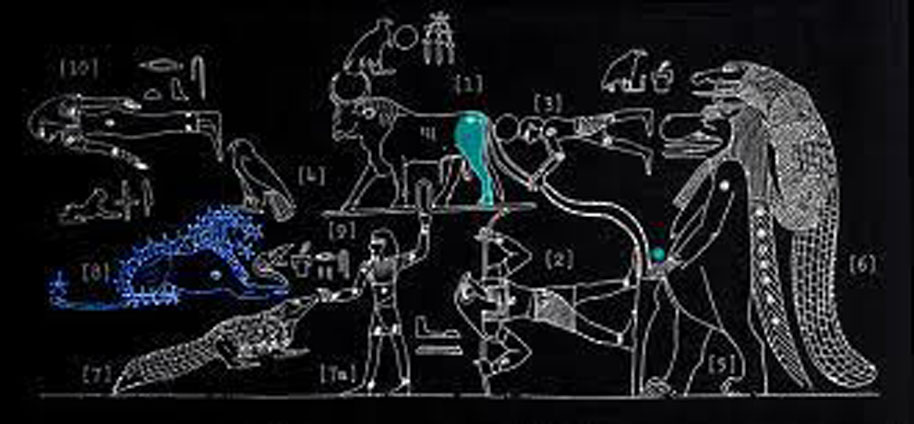

On Indus valley seals likely representing the Northern constellations can be seen on this example the elephant as greater Draco, the Swastika as a symbol of Ursa Major and Leo Minor and Leo Major and the figure in the tree Cancer.

As an alternative the bison can be seen as relating to Ursa Major which is the same as per Egypt and also the crocodile as relating to Lesser Draco on this example, so elephant, bison and Leo Major and Minor.

In Egypt the leg of the Bison could also be used as an alternate sign on it's own.

a reply to: Madrusa
So this site is as old as Göbekli Tepe... pretty amazing, looks like there is continuity with the Near East too with the Aquarian symbol, Enki, and also the various "Master of Animals" forms (or maybe Shiva) from your link.

Really there is a few enigmas here 🤔
Geometrically the swastika represents an unfolded two dimensional projection of cube, it extrapolates into a 4D hypercube in that manner. I'll just have to put a giff here because I like tesseracts.

As polarity reversed opposites I would guess they also represent female and male, or Goddess and God, fertility rites in ancient cultures. The oldest one found is 15000 yrs from the Palaeolithic settlement of Mezin near the Russian border.

They actually do have some strange properties, there is possible applications for it's use in optoelectronics, laser physics, optical communications, and quantum cryptography.

Even zero point? Well idk this is experimental, but doesn't seem like a good idea to ban it quite yet, or ever really it being an ancient symbol found worldwide and natural geometry... like trying to ban the tide.
So this site is as old as Göbekli Tepe... pretty amazing, looks like there is continuity with the Near East too with the Aquarian symbol, Enki, and also the various "Master of Animals" forms (or maybe Shiva) from your link.

Really there is a few enigmas here 🤔
The word swastika comes from the Sanskrit roots su (good) and asti (to prevail), meaning wellbeing, prosperity or good fortune.
Symbolises an entire state of being in Indian philosophy – Turiya, the fourth state of consciousness, which is beyond waking, sleeping and dreaming.
Geometrically the swastika represents an unfolded two dimensional projection of cube, it extrapolates into a 4D hypercube in that manner. I'll just have to put a giff here because I like tesseracts.

As polarity reversed opposites I would guess they also represent female and male, or Goddess and God, fertility rites in ancient cultures. The oldest one found is 15000 yrs from the Palaeolithic settlement of Mezin near the Russian border.

They actually do have some strange properties, there is possible applications for it's use in optoelectronics, laser physics, optical communications, and quantum cryptography.
www.innovations-report.com...
Dr Darren Bagnall from the School of Electronics and Computer Science (ECS) at the University of Southampton has found that he can arrange tens of thousands of gold swastikas on a square millimetre to form new optical metamaterials that act to artificially change the polarisation of light, effectively “twisting” light in accordance with the rotation of the swastikas. By changing the degree of twist in a predictable way the chiral metamaterials can provide an alternative way to code information that is being transmitted using light.
According to Dr Bagnall, it is the special arrangement and squareness of the swastika which makes it the ideal geometry for their experiments. He comments: “The swastika has a number of special features, it is entirely made up of vertical and horizontal straight lines and it is square but can still provide the feeling of left-handed or right-handed rotation known as chirality. It is this chirality which causes our swastikas to twist light.”

Even zero point? Well idk this is experimental, but doesn't seem like a good idea to ban it quite yet, or ever really it being an ancient symbol found worldwide and natural geometry... like trying to ban the tide.
www.semanticscholar.org...
It is also proposed that the swastika rotor could generate energy on a smaller scale from sound waves and Brownian motion, and potentially the zero point field.
edit on 22-1-2022 by primalfractal because: (no reason given)
First I've heard of petroglyphs being an indicator of civilization.
Harte
Harte
a reply to: Harte
I would agree with you that there are probably a lot of petroglyphs that were carved by bored roaming hunter gatherers while waiting out a rainy spell in a cave somewhere. When you see some math that might represent the seasonal zodiak positions of the stars you start to think this may have been a settled tribe investigating the heavens for agricultural purposes.
For example near the 4 corners area of the US there is a monsoonal season of a couple months in the summer.

I would agree with you that there are probably a lot of petroglyphs that were carved by bored roaming hunter gatherers while waiting out a rainy spell in a cave somewhere. When you see some math that might represent the seasonal zodiak positions of the stars you start to think this may have been a settled tribe investigating the heavens for agricultural purposes.
For example near the 4 corners area of the US there is a monsoonal season of a couple months in the summer.

a reply to: primalfractal
They actually built scale models of Enki's shrine in the Cosmic Ocean, which at first glance might resemble an aerial view of a long lost desert city of Bactria Margiana.
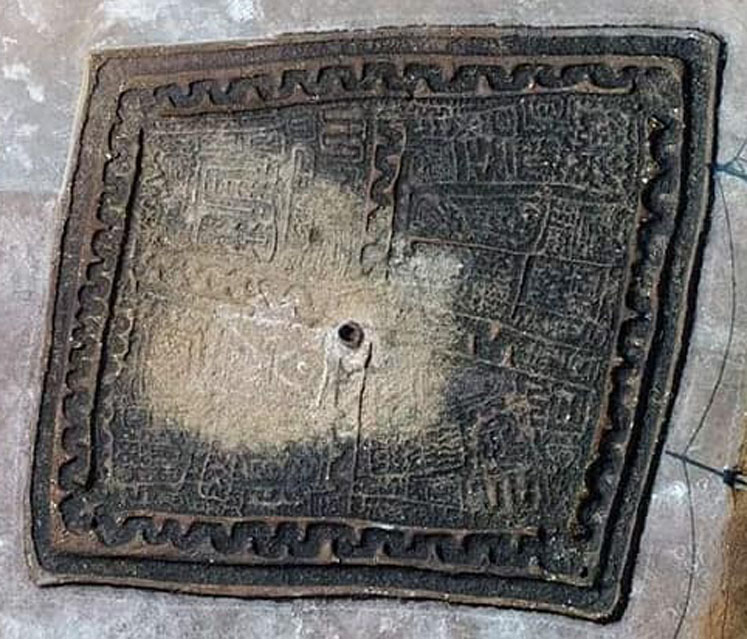
So how would a bunch of people apparantly living in caves 12,000 years ago come up with what might be considered a proto-Mandala of an idealized City, seems very unlikely if not impossible.

It seems likely this also represented a Constellation, the Pegasus square, in the same sense that the Sumerians later understood it as related to the cult of Enki.
The tradition in itself a possible basis for the whole lost City of Atlantis tradition, except it was clearly understood as in the Heavens, the idea of the idealized City may pre-date the construction of the first village if introduced from outside, the cult of Enki indicated he was a seafarer, arriving on a ship named the Stag of the Abzu, this is often seen on Dilmun seals, there are also mixed influence Dilmun/Indus valley seals, so for example you have the ship of Enki and the Indus valley Swastika for Ursa Major, seven dots for seven stars as in Mesopotamian tradition yet an Indus Valley numeric determiner indicating seven stars as one constellation.

They actually built scale models of Enki's shrine in the Cosmic Ocean, which at first glance might resemble an aerial view of a long lost desert city of Bactria Margiana.

So how would a bunch of people apparantly living in caves 12,000 years ago come up with what might be considered a proto-Mandala of an idealized City, seems very unlikely if not impossible.

It seems likely this also represented a Constellation, the Pegasus square, in the same sense that the Sumerians later understood it as related to the cult of Enki.
The lord established a shrine, a holy shrine, whose interior is elaborately constructed. He established a shrine in the sea, a holy shrine, whose interior is elaborately constructed. The shrine, whose interior is a tangled thread, is beyond understanding. The shrine's emplacement is situated by the constellation the Field, the holy upper shrine's emplacement faces towards the Chariot constellation. Its terrifying sea is a rising wave, its splendour is fearsome. The Anuna gods dare not approach it. …… to refresh their hearts, the palace rejoices. The Anuna stand by with prayers and supplications. They set up a great altar for Enki in the E-engura, for the lord ……. The great prince ……. …… the pelican of the sea.
The tradition in itself a possible basis for the whole lost City of Atlantis tradition, except it was clearly understood as in the Heavens, the idea of the idealized City may pre-date the construction of the first village if introduced from outside, the cult of Enki indicated he was a seafarer, arriving on a ship named the Stag of the Abzu, this is often seen on Dilmun seals, there are also mixed influence Dilmun/Indus valley seals, so for example you have the ship of Enki and the Indus valley Swastika for Ursa Major, seven dots for seven stars as in Mesopotamian tradition yet an Indus Valley numeric determiner indicating seven stars as one constellation.

originally posted by: fromunclexcommunicate
a reply to: Harte
I would agree with you that there are probably a lot of petroglyphs that were carved by bored roaming hunter gatherers while waiting out a rainy spell in a cave somewhere. When you see some math that might represent the seasonal zodiak positions of the stars you start to think this may have been a settled tribe investigating the heavens for agricultural purposes.
For example near the 4 corners area of the US there is a monsoonal season of a couple months in the summer.
There are gradations between hunter-gatherer and civilization. You don't just go from hunter-gatherer to civilized.
Harte
its possible the petroglphs were done by people displaced by climate change. The underwater remains of city of Dwarka (possibly city of Krishna) for
example is 80-100 feet below sea level which dates the city as being at least 8,000 - 10,000 years old according to
this sea level rise map.
a reply to: Madrusa
The mandala is very cool and rather anomalous, apparently some of the locals say "It was aliens", anyway it definately wasn't primative cave dwellers. Called a petroglyph on the site I looked up but really more a complex sculpture incorporating knowledge of geometry, astronomy, spiritual aspects, and some sort of measuring system.
Mehrgarh (7000 BCE– 2500/2000 BCE) was one of the earliest sites in South Asia to have farming and could bridge the gap between whoever produced the petroglyphs and the Indus Valley Civilisation.

Mehrgarh and the Indus Valley (2500 BCE-1500 BCE) had advanced hydrotechnologies that were unmatched worldwide until the 19th century. This would promote the assumption of a reservoir of technology.
But what I find truely stunning about the Indus Valley is there has been no weapons or fortifications found, has such a thing ever existed elsewhere? A good sign for those optomistic about the human race.
The only inkling of violence was in one scene with a tiger goddess, and it's mythical so could denote an internal struggle, some things are worth fighting for.

The mandala is very cool and rather anomalous, apparently some of the locals say "It was aliens", anyway it definately wasn't primative cave dwellers. Called a petroglyph on the site I looked up but really more a complex sculpture incorporating knowledge of geometry, astronomy, spiritual aspects, and some sort of measuring system.
Mehrgarh (7000 BCE– 2500/2000 BCE) was one of the earliest sites in South Asia to have farming and could bridge the gap between whoever produced the petroglyphs and the Indus Valley Civilisation.
According to Asko Parpola , the culture migrated into the Indus Valley and became the Indus Valley Civilization of the Bronze Age.
Jarrige notes "the assumption that farming economy was introduced full-fledged from Near-East to South Asia, and the similarities between Neolithic sites from eastern Mesopotamia and the western Indus Valley, which are evidence of a "cultural continuum" between those sites. However, given the originality of Mehrgarh, Jarrige concludes that Mehrgarh has an earlier local background

Mehrgarh and the Indus Valley (2500 BCE-1500 BCE) had advanced hydrotechnologies that were unmatched worldwide until the 19th century. This would promote the assumption of a reservoir of technology.
www.mdpi.com...
The communities residing in both civilizations had well developed agriculture, sanitation, water management, wells, baths, toilets, dockyards, and waterlogging systems and were the master of the water art.
But what I find truely stunning about the Indus Valley is there has been no weapons or fortifications found, has such a thing ever existed elsewhere? A good sign for those optomistic about the human race.
www.newscientist.com...
“What’s left of these great Indus cities gives us no indication of a society engaged with, or threatened by, war,” says Neil MacGregor, former director of the British Museum in London. The Indus people, he argues, offer a novel model of an urban civilisation, without celebration of violence or extreme concentration of individual power: “Is it going too far to see these Indus cities as an early, urban Utopia?”
The only inkling of violence was in one scene with a tiger goddess, and it's mythical so could denote an internal struggle, some things are worth fighting for.

edit on 23-1-2022 by primalfractal because: (no reason given)
a reply to: primalfractal
There was a very little known and very little understood early proto-civilization in Central Iran that i think Mehrgarh would be an expansion from as well as the South-West Iranian sites such as Jiroft, and yes the Indus valley civilization an expansion from those.

In the context of this pattern of development the Southern Indian petroglyphs are anomalous and i still suspect they were a product of the inter-action of that local population with Indus-valley explorers down the Coast, who could thus have informed them of the existence of Cities.
Mehrgarh had an interest in the Alien Sonichus arriving from the Pleiades aboard the good ship Taurus with their mean looking Queen.

The Lady of the Spiked Throne
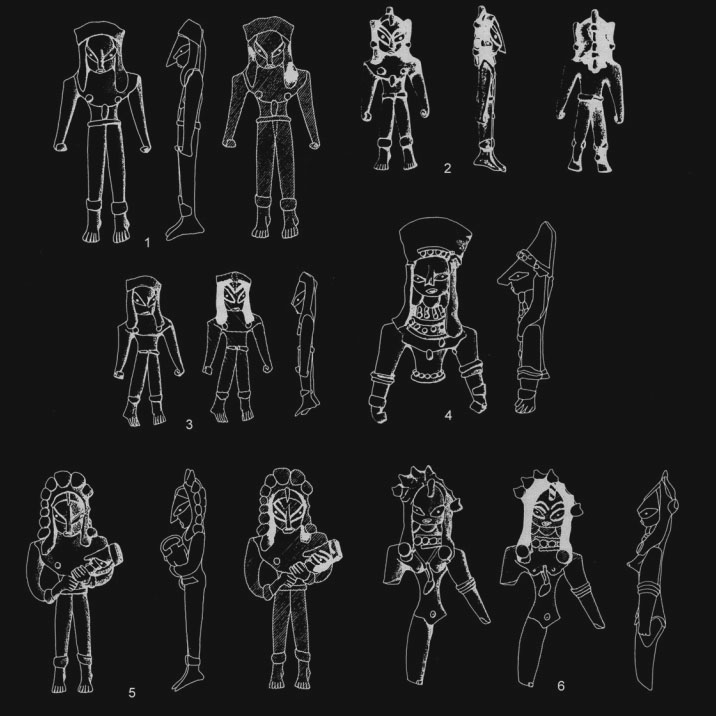
a reply to: glend
But they don't show any sign of being advanced, if you migrated from a City you'd just build another one and the dating of any submerged site takes into account local land slip conditions as well as global sea levels which is why the dating of the city of Dwarka ruins is contentious
There was a very little known and very little understood early proto-civilization in Central Iran that i think Mehrgarh would be an expansion from as well as the South-West Iranian sites such as Jiroft, and yes the Indus valley civilization an expansion from those.

In the context of this pattern of development the Southern Indian petroglyphs are anomalous and i still suspect they were a product of the inter-action of that local population with Indus-valley explorers down the Coast, who could thus have informed them of the existence of Cities.
Mehrgarh had an interest in the Alien Sonichus arriving from the Pleiades aboard the good ship Taurus with their mean looking Queen.

The Lady of the Spiked Throne

a reply to: glend
But they don't show any sign of being advanced, if you migrated from a City you'd just build another one and the dating of any submerged site takes into account local land slip conditions as well as global sea levels which is why the dating of the city of Dwarka ruins is contentious
edit on
23-1-2022 by Madrusa because: (no reason given)
originally posted by: primalfractal
a reply to: Madrusa
The mandala is very cool and rather anomalous, apparently some of the locals say "It was aliens", anyway it definately wasn't primative cave dwellers. Called a petroglyph on the site I looked up but really more a complex sculpture incorporating knowledge of geometry, astronomy, spiritual aspects, and some sort of measuring system.
Hunter-gatherers are not "primative cave dwellers."
Some such cultures are very capable. Hunter-gatherer isn't necessarily nomadic either.
At any rate, given no established date for these petroglyphs, it's a bit premature to say who it was and how they lived.
Harte
edit on 1/23/2022 by Harte because: of the wonderful things he does!
originally posted by: glend
its possible the petroglphs were done by people displaced by climate change. The underwater remains of city of Dwarka (possibly city of Krishna) for example is 80-100 feet below sea level which dates the city as being at least 8,000 - 10,000 years old according to this sea level rise map.
Dwarka is underwater due to subduction, not sea level rise.
There have been three "sinkings" of the site IIRC. The last one was during the Medieval period. The first was just a small fishing camp/village.
Harte
a reply to: Madrusa
Maybe it has something to do with the Cherokian prophecy?

Looks like yoga may have come with the flying bull also as shown by the Indus Valley Lord of Animals sitting in muludbanhasana. Syncretism with the Vedic forms contained in the fire rituals occurring around 1500 BCE. Both cultures tracing back to Iran.

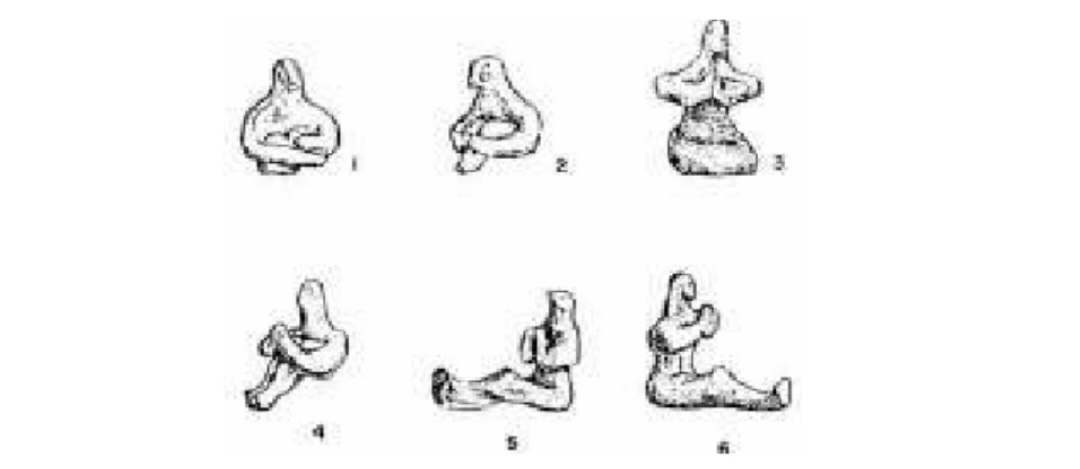
Some more evidence for this would be the profusion of Egyptian artifacts and hieroglyphs displaying yoga like poses, often in relation to religious practices. There is some clownworld controversy over the origin of the Egyptian ruling class, but the DNA data from the mummies shows strongest affinity to the Near East.
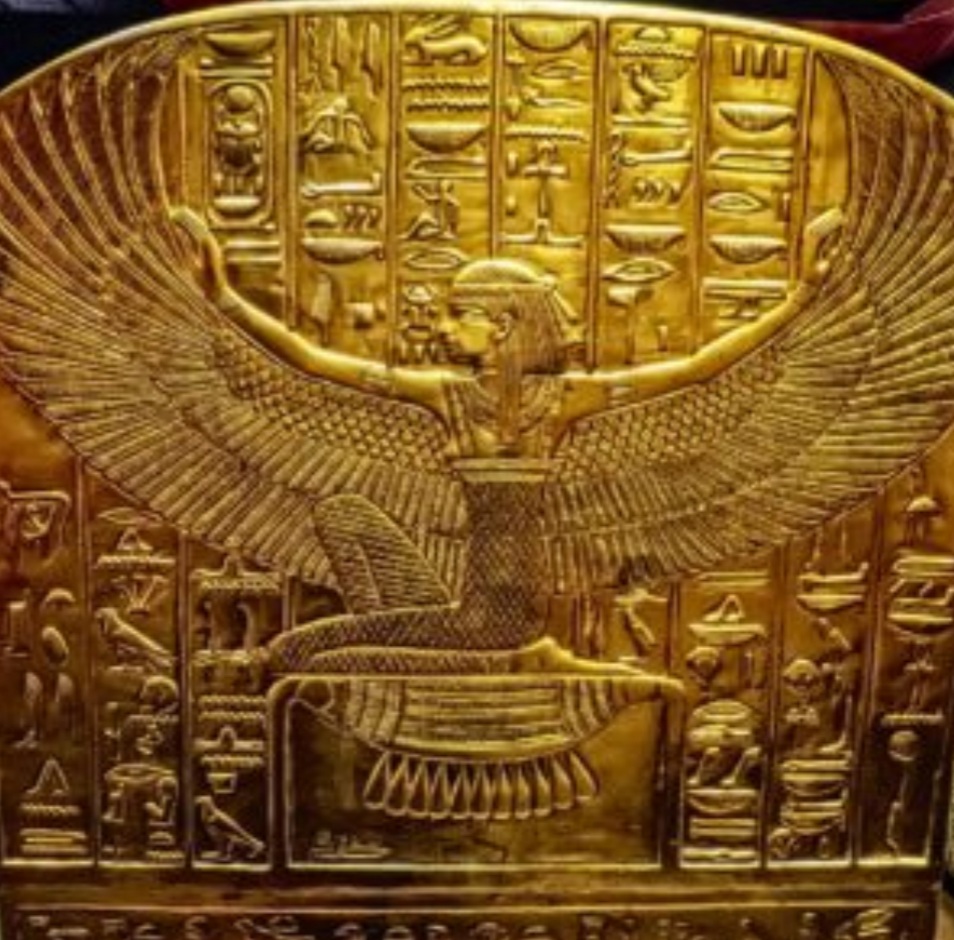
Maybe it has something to do with the Cherokian prophecy?
Hundreds of years later, the king of the Cherokee Clan would be reincarnated as Christian Weston Chandler. His present day self would go on to fulfill the prophecy with his queen and rival, guided by an avatar of his ancient alter ego.

Looks like yoga may have come with the flying bull also as shown by the Indus Valley Lord of Animals sitting in muludbanhasana. Syncretism with the Vedic forms contained in the fire rituals occurring around 1500 BCE. Both cultures tracing back to Iran.


Some more evidence for this would be the profusion of Egyptian artifacts and hieroglyphs displaying yoga like poses, often in relation to religious practices. There is some clownworld controversy over the origin of the Egyptian ruling class, but the DNA data from the mummies shows strongest affinity to the Near East.

edit on 24-1-2022 by primalfractal because: (no reason given)
a reply to: Harte
Hunter-gatherers are primitive as far as the definition of the word, capability is of course contextual.
That the petroglyphs are Neolithic doesn't seem to be debated, the connection to the Indus Valley is fairly clear due to the similarities.

www.academia.edu...
Hunter-gatherers are primitive as far as the definition of the word, capability is of course contextual.
That the petroglyphs are Neolithic doesn't seem to be debated, the connection to the Indus Valley is fairly clear due to the similarities.

www.academia.edu...
edit on 24-1-2022 by primalfractal because: (no reason given)
a reply to: primalfractal
That figure also appears to have some relationship to the Zodiac, the four beasts seen in conjunction can be related to the circumpolar region, and the figure also appears in possible a Pisces-Aries-Taurus-Gemini seal illustration.

Also worth noting that while some were in the Bronze age others were still at the Mesolithic level of development.
That figure also appears to have some relationship to the Zodiac, the four beasts seen in conjunction can be related to the circumpolar region, and the figure also appears in possible a Pisces-Aries-Taurus-Gemini seal illustration.

Also worth noting that while some were in the Bronze age others were still at the Mesolithic level of development.
a reply to: Madrusa
In relation to the astrology Shiva has a bull for a steed, and fish via Vishnu as a part of the trimurti.
Pashupati "Lord of Animals" in the later Hindu tradition is an aspect of Shiva that represents the animal consciousness. Pashu means animal and comes from the root path, to fix, bind, as in controlling the lower instinctive energies. So an Earth god with cthonic elements, portal guardian representing fecundity and the beggining of spiritual evolution.
Cernunnos is a Western form of the Lord of Animals.
The Gundestrup cauldron somewhat links the two, said to be Cernunnos and from Thrace, but has elephants on it.

The Gundestrup Cauldron and its Indian Connection

In relation to the astrology Shiva has a bull for a steed, and fish via Vishnu as a part of the trimurti.
Pashupati "Lord of Animals" in the later Hindu tradition is an aspect of Shiva that represents the animal consciousness. Pashu means animal and comes from the root path, to fix, bind, as in controlling the lower instinctive energies. So an Earth god with cthonic elements, portal guardian representing fecundity and the beggining of spiritual evolution.
Cernunnos is a Western form of the Lord of Animals.
In Gallo-Roman religion, Cernunnos was a deity depicted with antlers, seated cross-legged, and is associated with stags, horned serpents, dogs, bulls, and rats. He is usually holding or wearing a torc and has been seen holding a bag of coins (or grain) and a cornucopia
Interpretations of his role within Gaulish culture vary from seeing him as a god of animals, nature and fertility to a god of travel, commerce and bi-directionality
The Gundestrup cauldron somewhat links the two, said to be Cernunnos and from Thrace, but has elephants on it.

According to the art historian Timothy Taylor writing in the Scientific American: “A shared pictorial and technical tradition stretched from India to Thrace, where the cauldron was made, and thence to Denmark. Yogic rituals, for example, can be inferred from the poses of an antler-bearing man on the cauldron and of an ox-headed figure on a seal impress from the Indian city of Mohenjo-Daro…Three other Indian links: ritual baths of goddesses with elephants (the Indian goddess is Lakṣmī); wheel gods (the Indian is Viṣṇu); the goddesses with braided hair and paired birds (the Indian is Hariti).”
The Gundestrup Cauldron and its Indian Connection

edit on 25-1-2022 by primalfractal because: (no reason given)
a reply to: Madrusa
Hey we got no music on here yet, I'll have to fix that 😏
Hey we got no music on here yet, I'll have to fix that 😏
The Ring of the Sun"
The sun wheeled in its ring
The summer she sent
Roosters crowing time to rise
For elves in the meadow
Strength in the body
Growth in the earth
Roosters crowing - incantations growing
Norns spinning - fates binding
Gods crying - wolves howling
Ravens shouting - giants sleeping
Shadows threatening - barley swaying
Fields growing - sun shining
Wolves hunting - sun fleeing
edit on 25-1-2022 by primalfractal because: (no reason given)
a reply to: primalfractal
There might be a case that it represents Soma in correlation to Taurus, it's a case of developing the greater context of the Astrological signs, one of the most enigmatic is Cancer because there is no Crab seen, but it might be the case that the figure that grapples with Leo and Leo Minor which are seen as Northern constellations represents such.

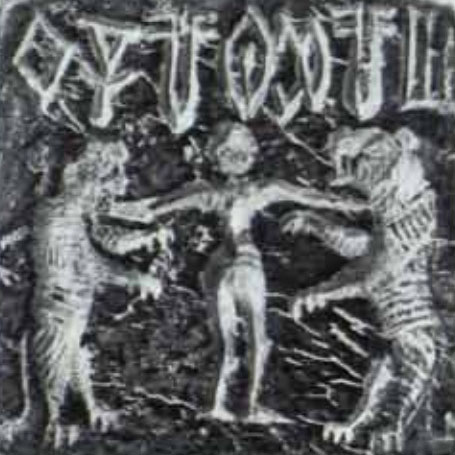
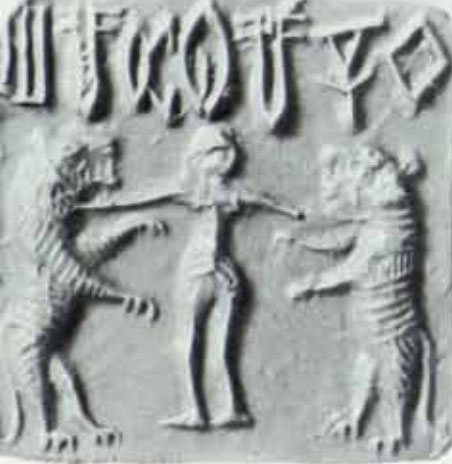
The Black and Gold Tiger can represent directly opposed spiritual forces of nature but these could then be understood as reconciled in the person of Tiger Woman, the sign of Cancer here.


It gets more complicated than that because there is also a tree sign seen in conjunction with the Tiger woman above and Cancer could be represented as a woman up the tree, as in this sign sequence Virgo/Furrow, Leo/Tiger, Tree/Cancer, divided tree/Gemini, were the tree of Cancer involves the unification of opposing principles Gemini appears to represent those divided again


The next question is what does she offer from within the tree to the Tiger and that might be considered in relationship of Cancer to Orion which again was a radically different sign to the now normative and involved the Soma producing Goddess the same as in Jemdat Nasr seals from Sumer, so in the tree she hangs the Soma she is producing to dry or drain.

The Walking bird sign is also related to Orion and seen again in conjunction with the Shamanic figure/Soma, though the Soma producing Goddess is not.

There is a faint sign that appears to show the Tree, Soma producing Goddess and Shamanic Lord and Gemini in conjunction.

It's surprising that a Zodiac sign of a woman up a tree of somewhat opposed nature offering a Tiger Soma didn't catch on elsewhere.
There might be a case that it represents Soma in correlation to Taurus, it's a case of developing the greater context of the Astrological signs, one of the most enigmatic is Cancer because there is no Crab seen, but it might be the case that the figure that grapples with Leo and Leo Minor which are seen as Northern constellations represents such.



The Black and Gold Tiger can represent directly opposed spiritual forces of nature but these could then be understood as reconciled in the person of Tiger Woman, the sign of Cancer here.


It gets more complicated than that because there is also a tree sign seen in conjunction with the Tiger woman above and Cancer could be represented as a woman up the tree, as in this sign sequence Virgo/Furrow, Leo/Tiger, Tree/Cancer, divided tree/Gemini, were the tree of Cancer involves the unification of opposing principles Gemini appears to represent those divided again


The next question is what does she offer from within the tree to the Tiger and that might be considered in relationship of Cancer to Orion which again was a radically different sign to the now normative and involved the Soma producing Goddess the same as in Jemdat Nasr seals from Sumer, so in the tree she hangs the Soma she is producing to dry or drain.

The Walking bird sign is also related to Orion and seen again in conjunction with the Shamanic figure/Soma, though the Soma producing Goddess is not.

There is a faint sign that appears to show the Tree, Soma producing Goddess and Shamanic Lord and Gemini in conjunction.

It's surprising that a Zodiac sign of a woman up a tree of somewhat opposed nature offering a Tiger Soma didn't catch on elsewhere.
new topics
-
New UK Petition - Close the borders! Suspend ALL immigration for 5 years!
Regional Politics: 6 minutes ago -
The Looking Glass - Episode 3: The Path of Least Resistance
Short Stories: 2 hours ago -
Credit card debt
Relationships: 4 hours ago -
President-elect Trump asks the Supreme Court to Let Tik-Tok Continue Operating in the U.S..
Mainstream News: 4 hours ago -
Treasury Secretary Janet Yellen Says The USA Will Be in Debt Default in Jan 2025 - Unless...
Mainstream News: 8 hours ago -
Trash To Treasure: Dumpster Diving With Mike The Scavenger
General Chit Chat: 9 hours ago -
Danish Prime Minister said to keep 3 days worth of canned goods on hand
World War Three: 9 hours ago
top topics
-
The hunter has become the hunted
Politicians & People: 12 hours ago, 19 flags -
Trump's idea to make Canada the 51st US state: 'Potential is massive'
Mainstream News: 13 hours ago, 14 flags -
Danish Prime Minister said to keep 3 days worth of canned goods on hand
World War Three: 9 hours ago, 5 flags -
Treasury Secretary Janet Yellen Says The USA Will Be in Debt Default in Jan 2025 - Unless...
Mainstream News: 8 hours ago, 5 flags -
Trash To Treasure: Dumpster Diving With Mike The Scavenger
General Chit Chat: 9 hours ago, 3 flags -
Credit card debt
Relationships: 4 hours ago, 2 flags -
President-elect Trump asks the Supreme Court to Let Tik-Tok Continue Operating in the U.S..
Mainstream News: 4 hours ago, 1 flags -
The Looking Glass - Episode 3: The Path of Least Resistance
Short Stories: 2 hours ago, 1 flags -
New UK Petition - Close the borders! Suspend ALL immigration for 5 years!
Regional Politics: 6 minutes ago, 0 flags
active topics
-
Liberal Madness and the Constitution of the United States
US Political Madness • 16 • : charlest2 -
New UK Petition - Close the borders! Suspend ALL immigration for 5 years!
Regional Politics • 0 • : gortex -
Trump's idea to make Canada the 51st US state: 'Potential is massive'
Mainstream News • 44 • : Freeborn -
-@TH3WH17ERABB17- -Q- ---TIME TO SHOW THE WORLD--- -Part- --44--
Dissecting Disinformation • 3829 • : Crazierfox -
The Looking Glass - Episode 3: The Path of Least Resistance
Short Stories • 3 • : JJproductions -
Credit card debt
Relationships • 2 • : JJproductions -
Danish Prime Minister said to keep 3 days worth of canned goods on hand
World War Three • 5 • : DerBeobachter2 -
No Wonder We Are In Such INSANE Debt- Americans MUST Put a Stop to This
US Political Madness • 68 • : BernnieJGato -
President-elect Trump asks the Supreme Court to Let Tik-Tok Continue Operating in the U.S..
Mainstream News • 15 • : TheMisguidedAngel -
Elon Musk futurist?
Dreams & Predictions • 21 • : cherokeetroy

